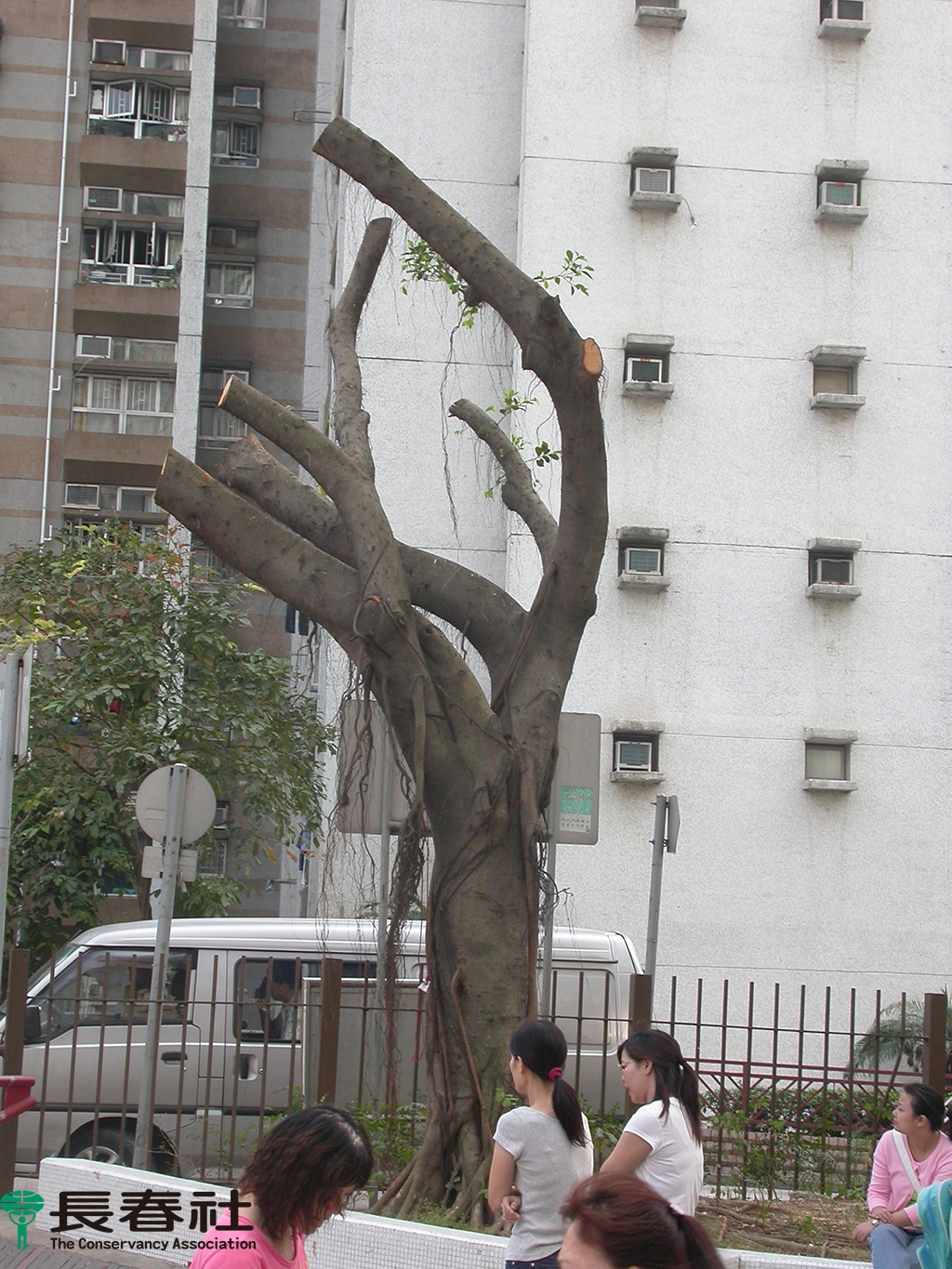
Leung King Estate was first made known to me from the topping incident happened in 2006. The Conservancy Association (CA) received a complaint from one of the participants of our event ‘Tree Lovers’ about mature trees being “topped” at Leung King Estate. From the Tree Lovers programme, participants learnt what “topping” means, which is non-disciplinary pruning trees without considering the need of trees or the consequences of cutting the trees. The most common and familiar type of topping is cut the tree at the trunk and left the trunk only, so that making the tree appears to be ‘shrunk’ (Photo 1). In 2006, 199 mature trees at Leung King Estate were chopped from over 10m in height to just about 5-6m. This incident aroused a widespread concern and discussions in the society ever since.
Positively, the topping incident at Leung King Estate brought society’s and even government’s attention to the importance of proper tree management. It even contributed to the promulgation of Pruning Guideline by the Environment, Transportation and Works Bureau, which pointed out clearly that ‘topping is not allowed’. Although the overall tree management in Hong Kong have had substantial development in these 14 years, we are still receiving complaints from citizens on trees being “topped”. Many still have yet to see the problem in topping trees while some even think that trees could be topped to promote good health. 14 years after the incident, let ‘s go back to Leung King Estate to study the topped trees, examine the overall condition of the trees and find out the reasons for not to top trees.
Why not topping?
Topping can destroy trees in an instant with more serious problems not showing up until years later. Many studies have pointed out the main problems of topping:
- Main trunk or branches decay
- Stimulating the growth of water sprouts, which are long, thin and can be broken easily
- Destroying tree forms and affecting its ornamental value
- Largely reducing the number of leaves, which disrupts the food supply and balance
We will use the case at Leung King Estate to explain why trees should not be topped.
Revisiting Leung King Estate: Ragged and Tattered
I have not been to Leung King Estate for two to three years. The first time I came to Leung King Estate was in 2006, right after the topping incident. ‘Come and see the graveyard of trees (Photo 2)’, said a resident who thought I was a reporter during my first visit. Today, the shocking picture of “a graveyard full of sticks” have gone, but wildly grown tree branches and severely rotten wounds caused by the topping (Photo 3) can be seen everywhere. Now, my impression of trees at Leung King Estate are ragged and tattered.
As the cuts were mostly at the main trunks or main branches, the rotten wounds can be directly spreading further in the trunks and brnaches. In the past, I have also encountered a situation where a tree was decayed from top to bottom. Around the cut there are many long water sprouts. As time goes by, the cut will be continuously decayed, but water sprouts will become longer and heavier, and will finally fall off due to insufficient support (Photo 4).
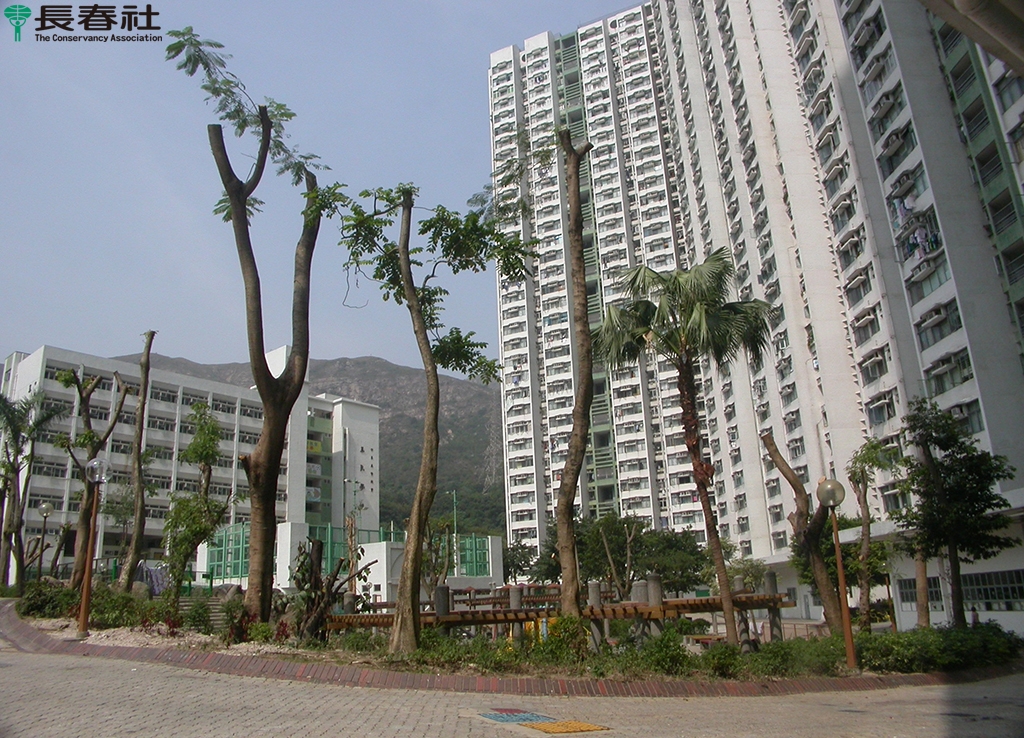
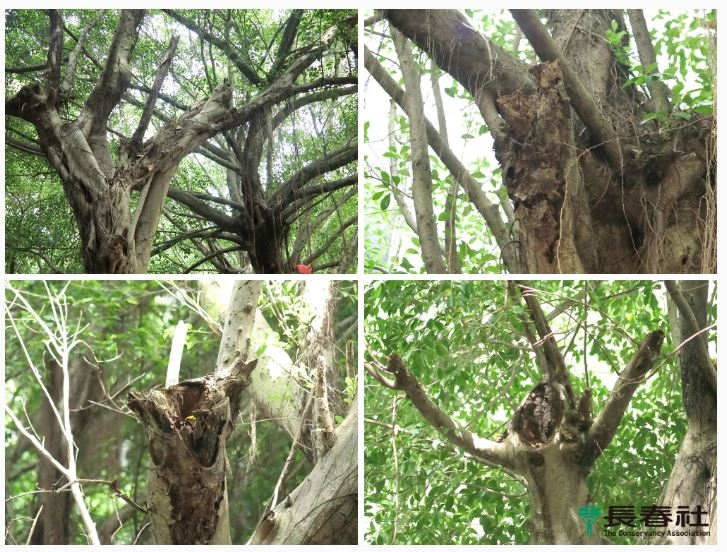
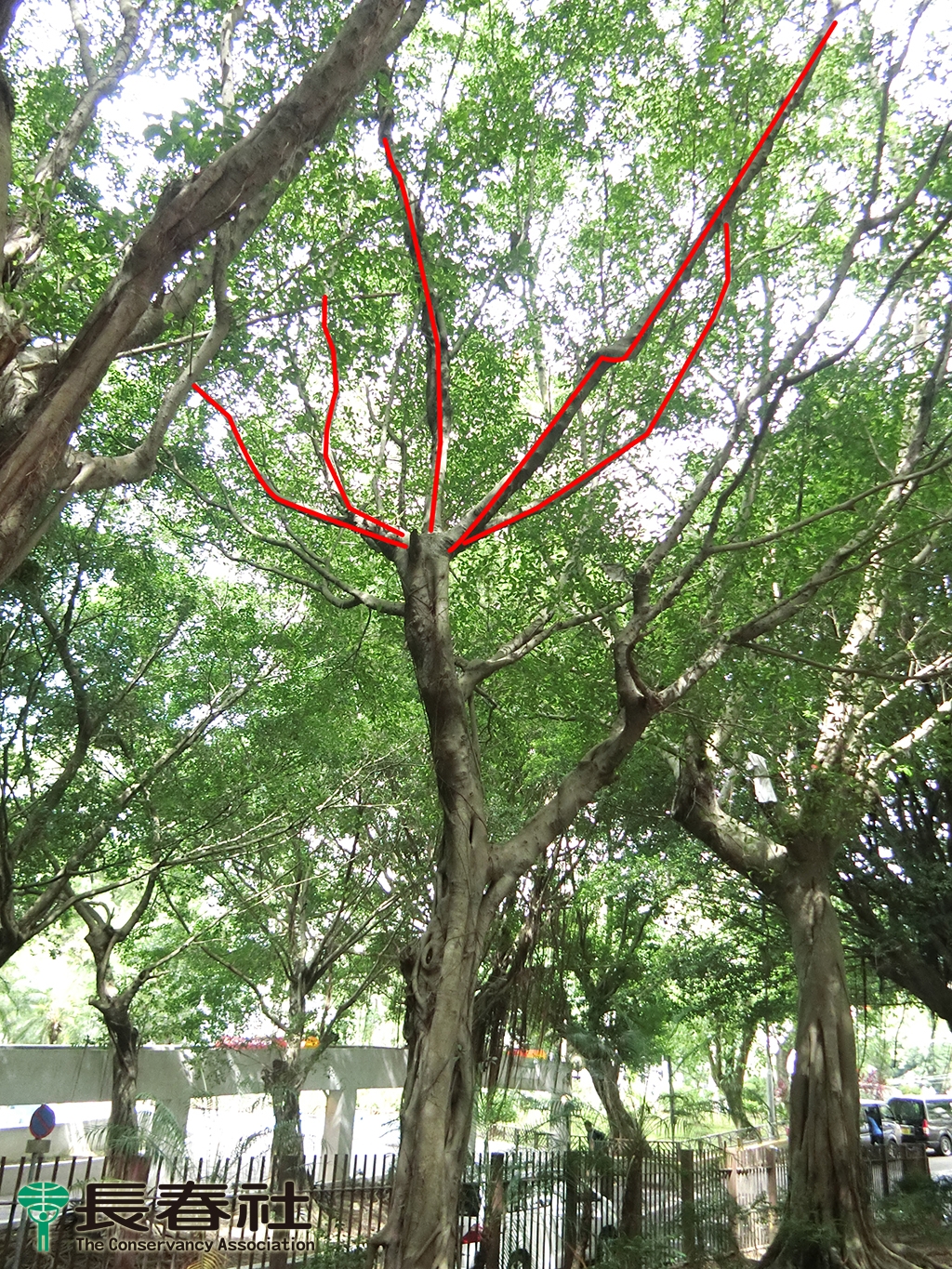
Deformed tree canopy structure
The reconstruction of topped canopy relies on water sprouts. As the long water sprouts are growing fast and messy, the form of tree will be very different from its original form even if the canopy is reestablished (Photo 6). When having closer look, it will find regrown branches on topped trees are often deformed and messy. From the perspective of risk management, risks of branch breakage are therefore greatly increased while the appearance of topped trees is greatly deteriorated (Photo 6) from the perspective of garden viewing.
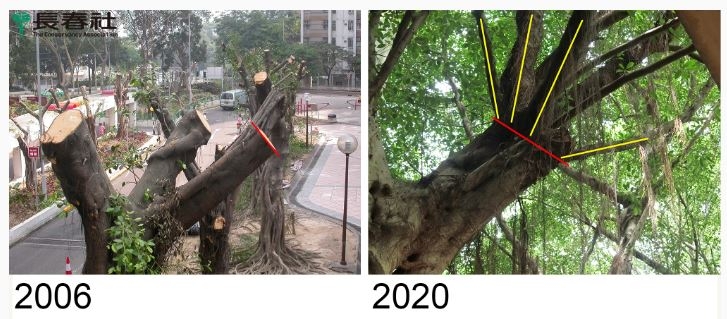
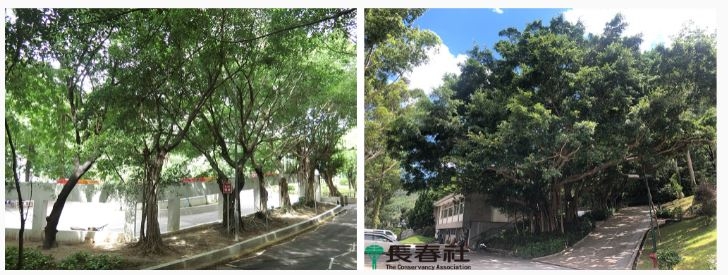
Food shortage faced by topped trees
Photosynthesis, happens in the leaves, is a biochemical reaction that produces food for the tree. Topping removes a large amount, if not all, of the leaves, which cut off the tree’s food supply. A way for trees to deal with food shortage is to utilize stored food and rapidly grow water sprouts so that the ‘food factory’, i.e. leaves, can resume operation as soon as possible. The reason for water sprouts growing so long and fast is to increase the amount of leaves. But the function of water sprouts is not to restoring normal growth form. Trees grow water sprouts because they are trying to save themselves in a survival crisis, so we should not misunderstand that topping encourages vigorous trees growth. The success of a tree’s self-rescue also depends on factors such as its health and surrounding sunlight as numerous topped trees have failed to rescue themselves and are left half-dead (Photo 7).

